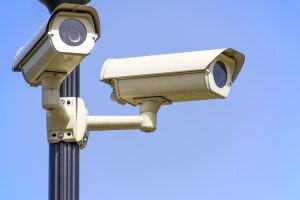Update: No cameras allowed inside health examination rooms

The Information and Privacy Commissioner of Ontario (IPC) just released a new blog titled: “Cameras in Doctors’ Exam Rooms? Not in Ontario” and released Decision 98.
In this decision, a media outlet notified the IPC that a cosmetic surgery clinic was using surveillance cameras in examination rooms.
The clinic had 24 security cameras recording continuously 24 hrs a day. Cameras were in examination rooms, operating room, pre-operative room, reception, hallways, administrative offices, computer workroom and staff kitchen.
It was acknowledged that from time to time patients would undress in the rooms under surveillance.
The purpose for the cameras was security not healthcare.
Patients were not asked to consent to be recorded. There were video surveillance notice posters up in the clinic and the cameras were visible.
The IPC concluded that the clinic’s use of surveillance cameras violated the Personal Health Information Protection Act of Ontario.
The clinic had been collecting personal health information without authority because of the extensive network of cameras and in particular the placement of the cameras in examination rooms.
However, because the clinic undertook the following steps, the IPC decided a further review was not warranted:
- The clinic ceased its recordings immediately when notified by the IPC
- Only 2 cameras remain in the clinic: at 2 reception desks and entrance
- The 2 cameras are only recording after office hours
- The clinic put up new signs to alert “For security, these premises are under closed circuit audio/video security surveillance”
- The clinic destroyed old recordings
- The clinic updated its privacy policies and consent forms
Bottom Line: Unless you need to have closed circuit recordings of patients for healthcare purposes, healthcare organizations are advised not to use video surveillance in patient areas. This is particularly important in areas where clinical services are delivered and where patients may be disrobing and vulnerable. If video surveillance is necessary for security purposes, your organization should be careful to limit the collection of personal health information and only use such surveillance to the scale appropriate to the security need.
Here are some additional resources:
Webinar on Dos ad Don’ts Video surveillance https://www.youtube.com/watch?v=iRGVeuRgsdY&feature=youtu.be
https://www.ipc.on.ca/wp-content/uploads/Resources/fact-13-e.pdf
https://www.ipc.on.ca/wp-content/uploads/Resources/2015_Guidelines_Surveillance.pdf
https://www.ipc.on.ca/wp-content/uploads/2016/11/2016-00-09-video-surveillance.pdf
If you are interested in my summary of all the IPC’s PHIPA decisions and orders, you can receive a free copy here.